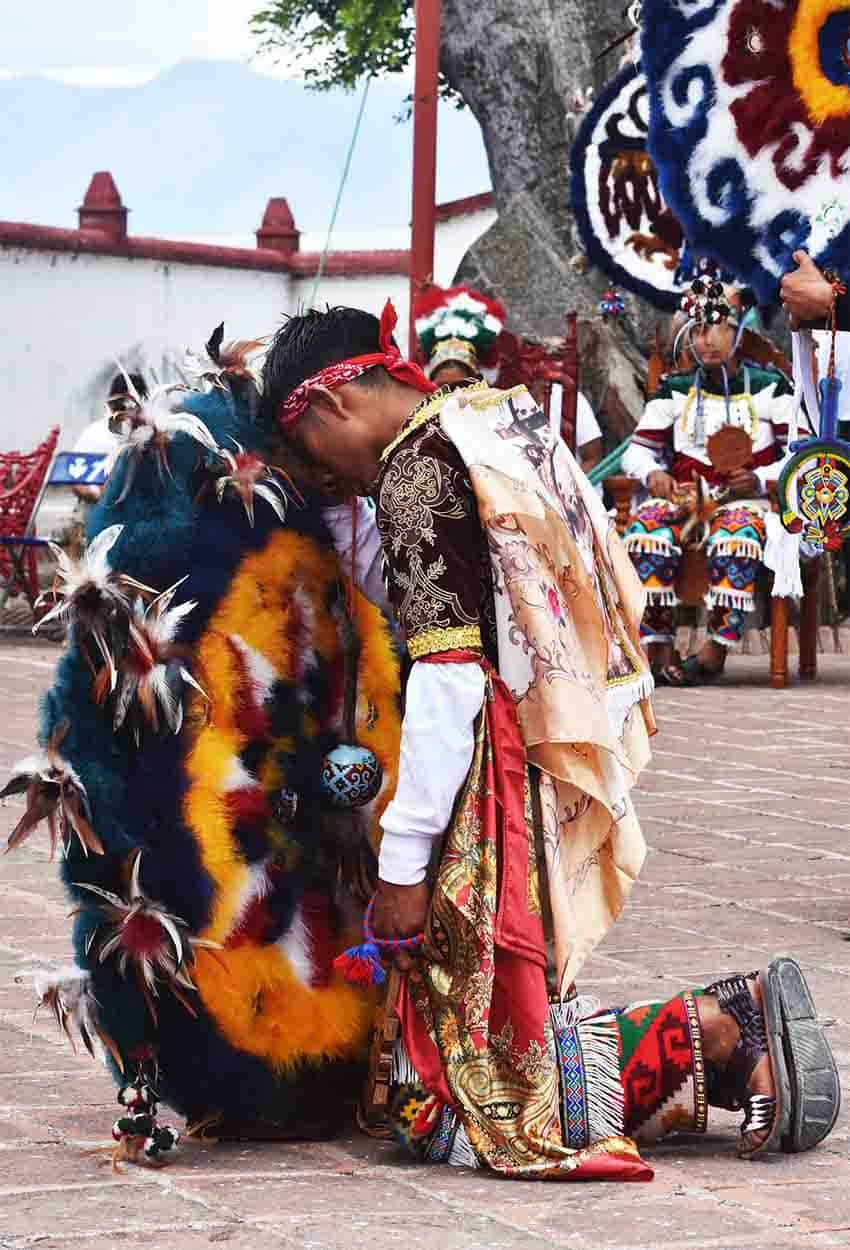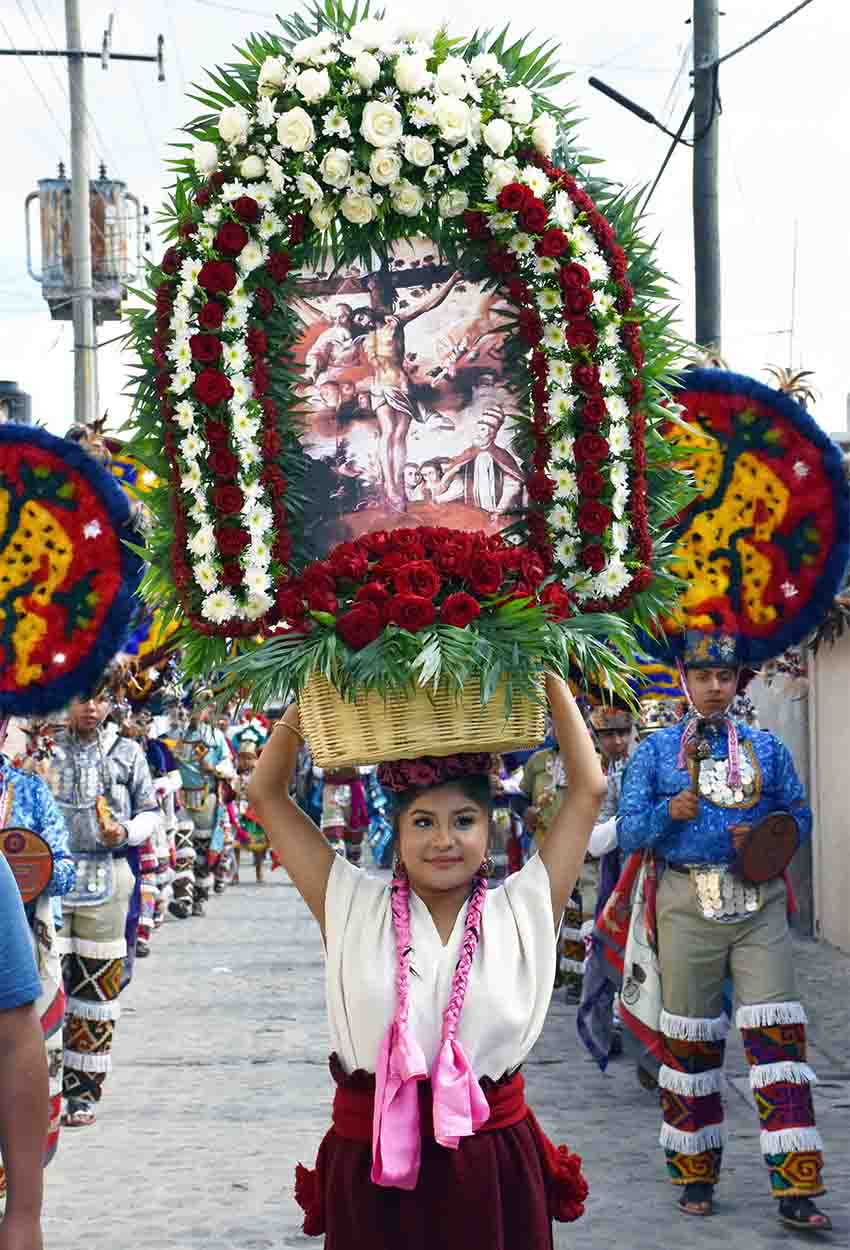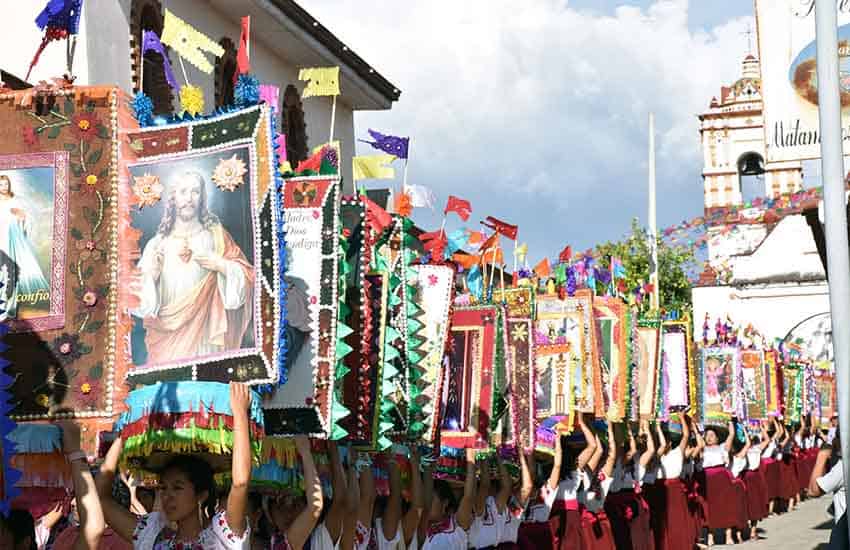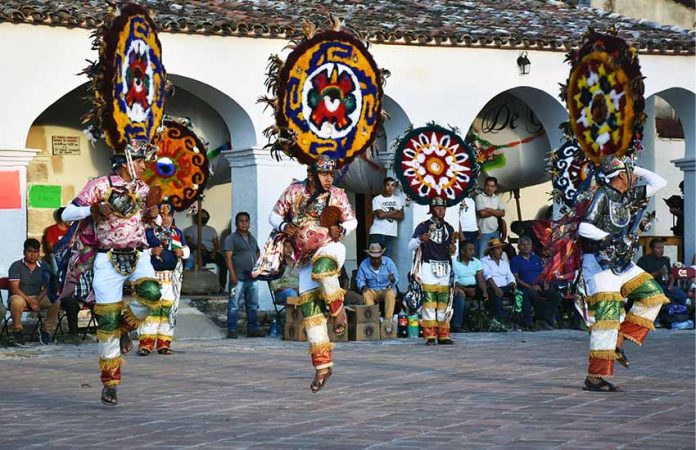For six days in early July, the atrium of the Iglesia Preciosa Sangre de Cristo in Teotitlán del Valle, Oaxaca is filled with 17 young men dressed in traditional Zapotecan clothing, complete with huge, beautifully crafted headdresses. They, along with two girls, then dance for as long as eight hours, fulfilling a promise to God.
This ceremony is known here as the Preciosa Sangre de Cristo (Precious Blood of Christ).
“We participate to ask for health, for well-being and for work,” said David Santiago Sosa.
The full promise they make—the promesa — is a three-year commitment to participate several ceremonies during the year.
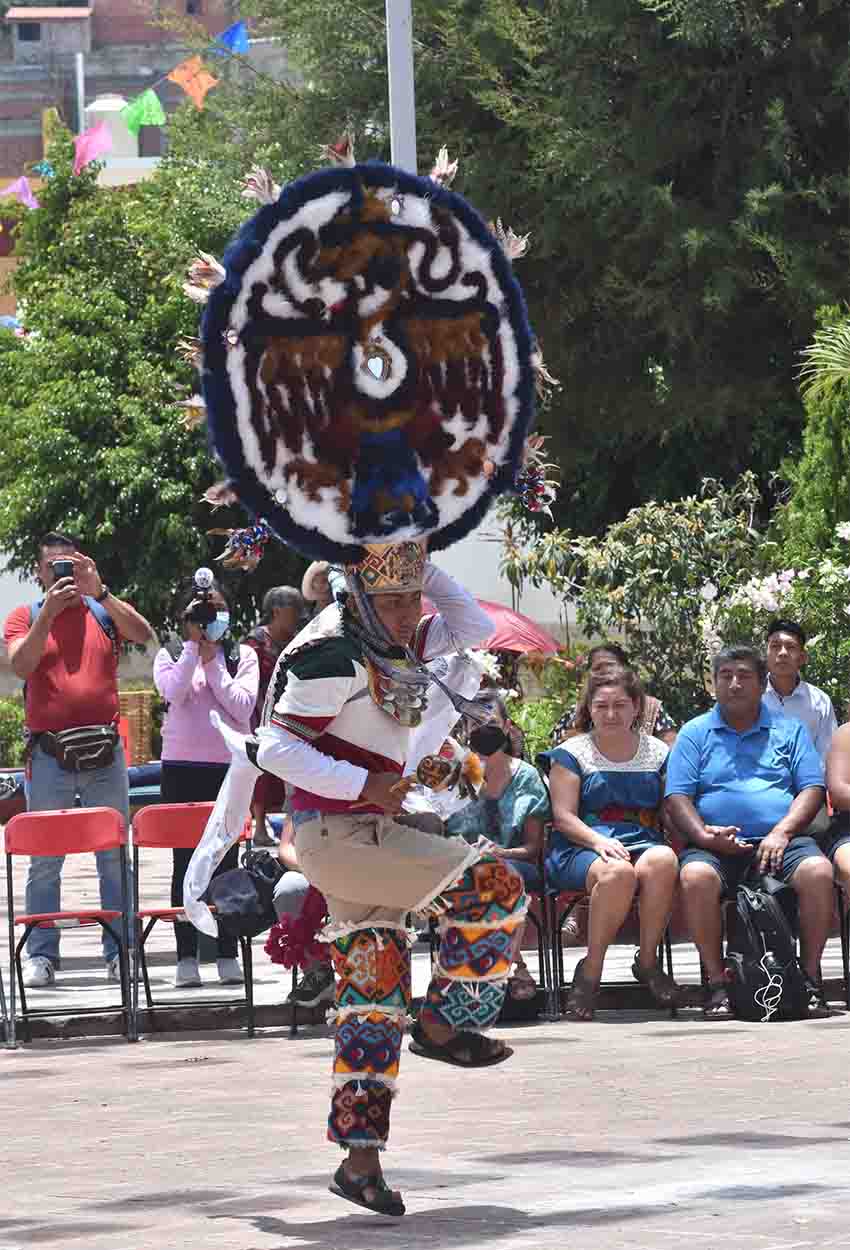
“We also decorate the church and participate in other activities,” said Emanuel Ruíz Ruíz. “It is all done with faith.”
It’s an enormous commitment.
For the young men, it means learning many intricate dances. “It takes eight months to a year to learn the dances because they are very complicated,” said Sosa.
Rehearsals took up seven hours a day, four days a week. “We repeat and repeat until we perfect everything,” Ruíz said.
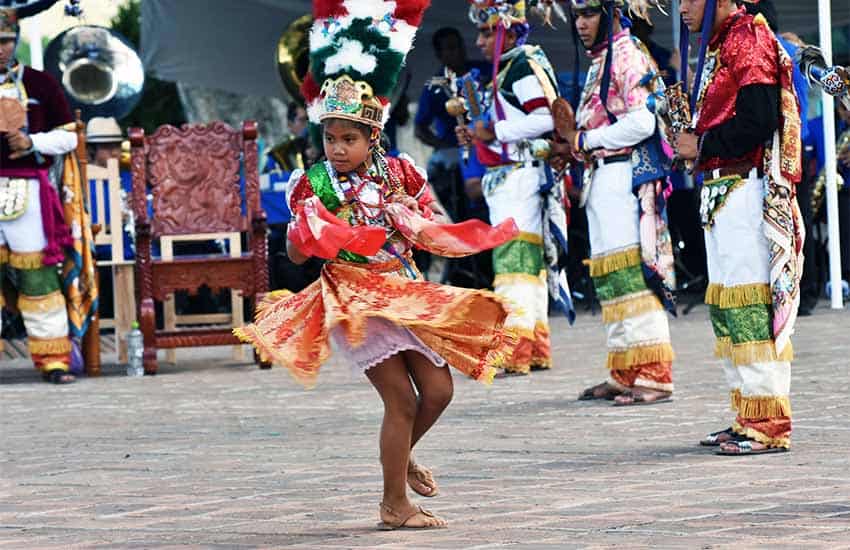
“For the first year of the promesa, one cannot work or do anything else,” said José Hernandez Ruíz. Although they can resume studies and work the last two years, Sosa decided to take a break from schooling. “I want to commit 100% to the promesa,” he said.
Silvia Melisa Zaños, seven years old, and Youshita Yamilet, eight, both portrayed La Malinche, the indigenous woman who aided conquistador Hernán Cortés. Zaños dressed in indigenous clothing while Yamilet was in more modern clothing, which portrayed La Malinche after her conversion to Catholicism when she was renamed Doña Marina.
These girls, despite their young age, also made a three-year promesa.
The ceremony is divided into three days. The first day, a Monday, is called the candela, or the candle.
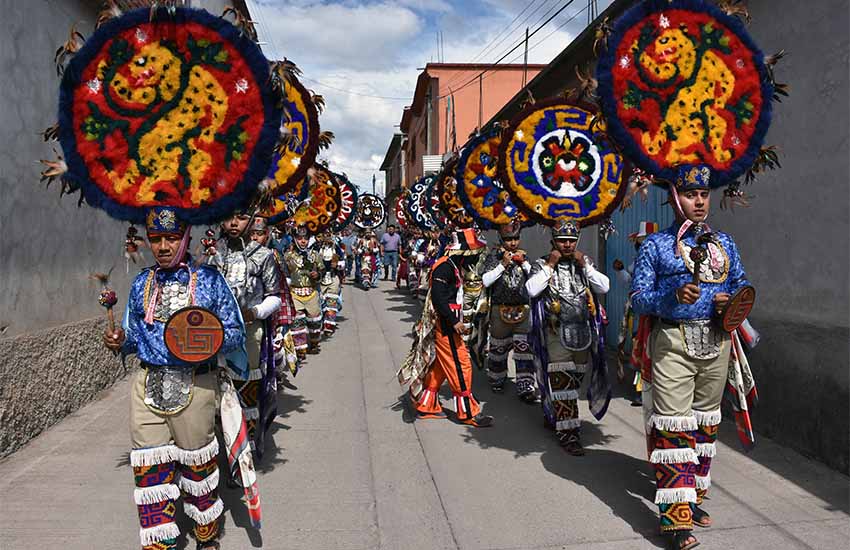
“It is a recorrido,” said Ruíz, who portrayed Moctezuma during the event. A recorrido is a walk through a pueblo. This one took about four hours. “It is to tell the pueblo that the fiesta is beginning.”
An orchestra of 32 musicians led the recorrido. Behind them was Marbella Irene Lázaro, carrying a large basket of roses on her head. “I represent all of the single women in the pueblo,” she said.
Then came the 17 young men and the two Malinches. They first stopped at the church atrium, which quickly filled with a couple of hundred young women carrying religious banners. All of the participants then left to continue the recorrido.
The second day is the Baile en la Víspera (Dance of the Evening).
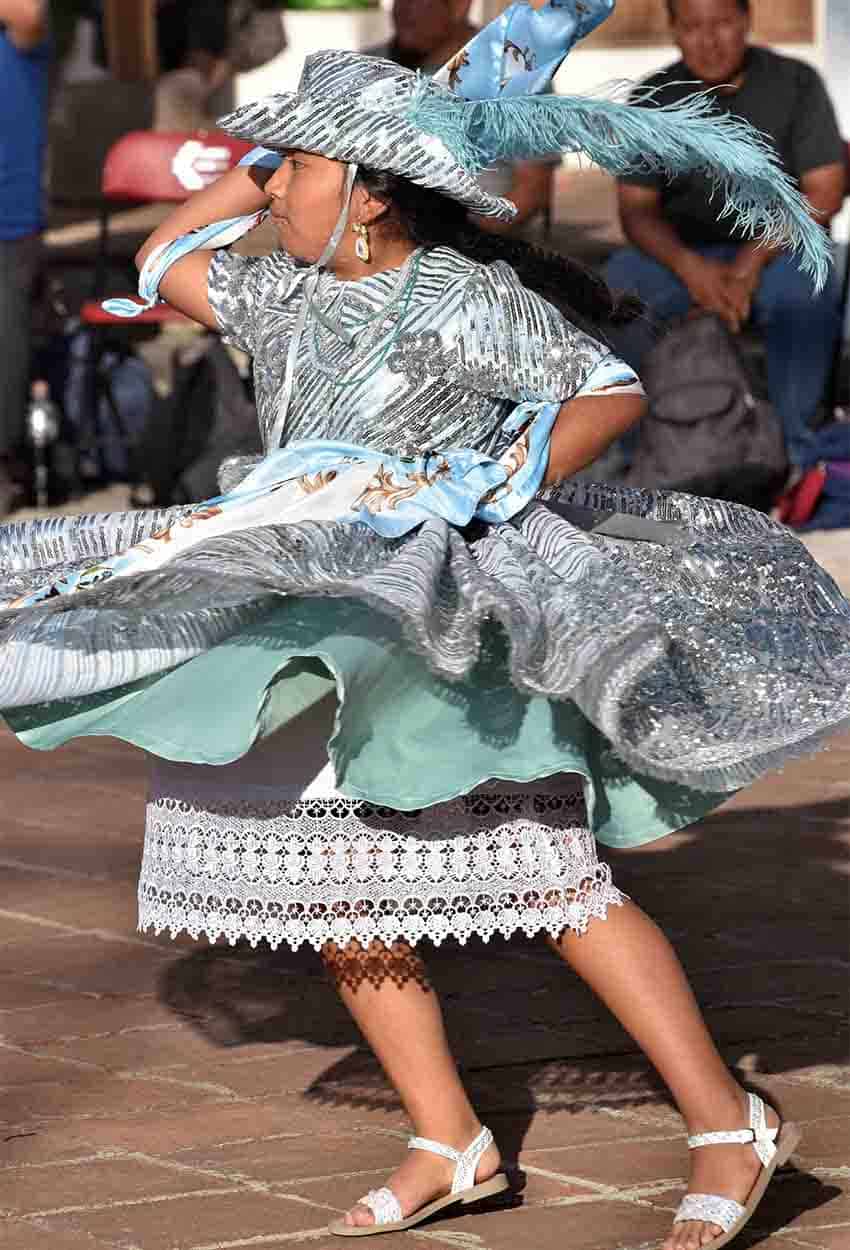
Surprisingly, the music accompanying the dances is classical, mostly waltzes that start slow and then quicken. The young men twirl, jump and kick while balancing penachos, which weigh two kilograms on their heads.
The dance lasted a little over five hours.
The third and final day, for the fiesta of the Precious Blood of Christ, they perform the Danza de la Pluma (Feather Dance).
“On this day, we dance eight hours,” explained Ruíz. “I feel tired, but I have to continue. I can only continue because of my faith. That is what moves me.”
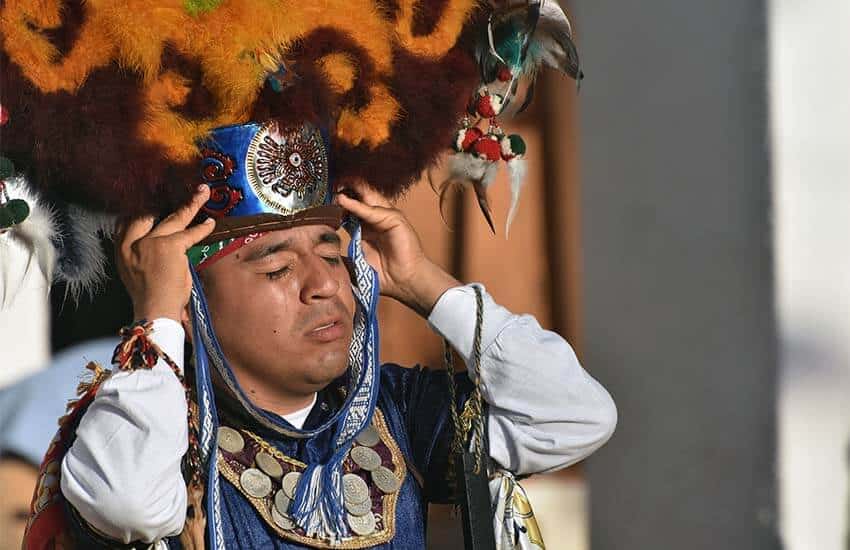
Thursday is a day of rest and then the ceremony is repeated in full beginning on Friday.
When asked what they would do on Thursday, Hernández answered simply, “Sleep.”
Joseph Sorrentino, a writer, photographer and author of the book San Gregorio Atlapulco: Cosmvisiones and of Stinky Island Tales: Some Stories from an Italian-American Childhood, is a regular contributor to Mexico News Daily. More examples of his photographs and links to other articles may be found at www.sorrentinophotography.com He currently lives in Chipilo, Puebla.

